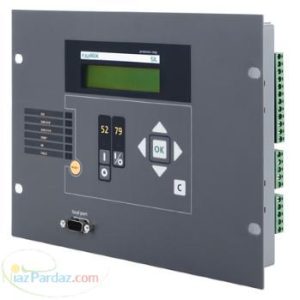در صورت قطع یک فاز یا دوفاز ، در صورتیکه سیم باز شده روی زمین بیافتد و منجر به اتصال کوتاه شود، قطعاً موجب عملکرد رله های حفاظتی جریانی می شود. اما اگر پس از پارگی خط اتصال کوتاه ایجاد نشود و سیستم در شرایط نامتعادل به بار دهی ادامه دهد، رله حفاظت زمین جهتی با توجه به میزان بار ممکن است تحت تأثیر مولفه صفر جریان بار قرار گرفته و عمل نماید، البته در شرایطی که میزان بار از مقدار ستینگ رله مزبورکمتر باشد، رله مزبور عملکرد نخواهد داشت. در مرجع زیر نحوه شکل گیری جریان مولفه صفر و تأثیر پذیری رله اتصال زمین جهتی از آن آمده است.
اما اگر پس از پارگی خط اتصال کوتاه ایجاد نشود و سیستم در شرایط نامتعادل به بار دهی ادامه دهد، رله حفاظت زمین جهتی با توجه به میزان بار ممکن است تحت تأثیر مولفه صفر جریان بار قرار گرفته و عمل نماید، البته در شرایطی که میزان بار از مقدار ستینگ رله مزبورکمتر باشد، رله مزبور عملکرد نخواهد داشت. در مرجع زیر نحوه شکل گیری جریان مولفه صفر و تأثیر پذیری رله اتصال زمین جهتی از آن آمده است.
An open phase not accompanied by a short circuit may be caused by the blowing of a fuse, or by faulty contacts in a circuit breaker. Or an open-phase condition may exist for a short time because of non-simultaneous circuit-breaker-pole closing or opening, or because of single-phase switching.
This subject is too extensive to treat here in all its various aspects. In general, only ground relays are apt to operate undesirably, although sometimes the phase relays of balanced current relaying may also operate undesirably. However, ground relays, being generally sensitive enough to operate on less than normal load current, are more apt to be the offenders. This subject is treated in more detail in Reference 12.
The operating tendencies of various types of relays can be determined from a study of the phase-sequence currents that flow during open-phase conditions. Consider the system diagram of Fig. 16. If one phase is open-circuited at the location shown in Fig. 16, the phase-sequence diagrams for the open phase are as shown in Fig. 17.
If two phases are open-circuited at the location shown in Fig. 16, the phase-sequence diagrams for the phase that is not open-circuited are shown in Fig. 18.
The arrows of Fig. 17 and 18 show the direction of current flow in the various phasesequence networks. Note that all these currents are of load-current magnitude, their size depending on the magnitude of load current flowing before the open-phase condition occurred.
The operating tendency of current-polarized directional-ground relays can be analyzed quite simply from Figs. 17 and 18 by remembering that the relays can trip when zero-phasesequence current flows out of the zero potential bus and into a line at a given location. A reversal of both of these directions also produces a tripping tendency. Based on this fact, Figs. 17 and 18 are labeled T (trip) and NT (not trip) at the ends of the lines to indicate the operating tendencies of the ground directional relays at those locations.
The operation of voltage-polarized ground directional relays obtaining voltage from a bus source will be the same as for current-polarized relays. However, if voltage is obtained from the line side of the breakers, as with coupling-capacitor potential devices, an open circuit between a bus and the voltage source of a given relay will produce an operating tendency opposite to that shown on Figs. 17 and 18 for the relay at that location.
The effect that has been most troublesome, actually, is the transient effect on high-speed ground relays of non-simultaneous circuit-breaker-pole closing or opening. It has been necessary to employ induction types and sometimes to increase the pickup of the relays in order to avoid undesirable operation.


